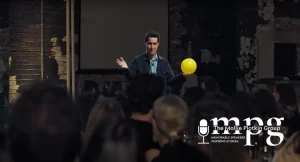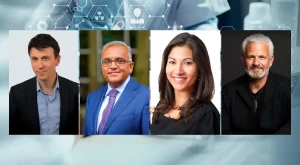John Roesch Interview
What would you consider to be the most important aspects of creating film and TV? Some common answers to this question might be: You need actors, a good storyline, or a good camera crew. While these answers are definitely correct, I think an overlooked area is sound design in film and TV. Believable sound effects immerse the audience into a scene. An area in which Foley artists specialize in.
Foley art is the act of creating sound effects for film and TV by using props, sometimes in unexpected ways. As you could imagine, the art form has changed since Jack Foley created it in the 1920’s.
I sat down with the Foley phenom, John Roesch, to talk about how his work has changed since he first started. John has an unbelievable resume doing Foley for The Empire Strikes Back, E.T., The Matrix, The Dark Knight, Inception, and so much more.
If you’d like to learn more about Mr. Roesch and his career, be sure to check out the interview we did with him!
How Foley has changed
What’s Different About Foley Now?
When I asked John about the various ways in which Foley has changed over the years, he had a lot to say.
Computers have obviously helped to streamline a lot of the work that used to be so tedious. With technology rapidly advancing, certain aspects of sound design have become much easier.
For example, John says that “technology has helped us to record things much more easily, with more natural sound palettes and full spectrums.” What’s more, is that since digital audio workstations (DAW’s) are now so common, the days of painstakingly having to rewind physical tape are mostly gone.
Another thing about Foley that has changed, is the size of the production teams.
“The actual performance of the job has not changed, but the constant pressure to keep costs down has gotten worse.”
Back when John first started, the teams involved in Foley were much bigger. Before things went digital, there were jobs for just about every part of the Foley process.
There were people in charge of props, boom mic operators, a recordist, audio mixers, and even a team of other Foley artists. Yet, there is always a pressure on keeping costs down, and as a result, many of these auxiliary roles became uncommon.
Nowadays, it’s becoming the norm to find Foley artists operating solely, or with one other person. John says that he personally works with two other people, one other Foley artist, as well as a sound mixer.
Teams are smaller because the technology we have now allows them to do more with less. Transitioning to doing things digitally, combined with the pressure to keep costs down, has resulted in much smaller Foley teams.
This of course comes with many pros and cons. On the one hand, modern technology helps Foley artists save time when it comes to many aspects of their work. Yet the disadvantage to this is that, as John puts it, “three minds are better than two minds.” Meaning that, the more people that contribute towards a project, the better the final product will be.
Foley Art Technique
Some Things Never Change.
Rapidly advancing technology has permenantly changed sound design. However, the art still requires creativity and an understanding of its principles.
“You can use or do anything, just as long as you believe that sound,” says John. In other words, the number one rule of Foley is: there are no rules.
As long as the sound is convincing, you’ve done your job as a Foley artist. That is the goal, no matter your technique, or technology.
Foley is a uniquely designed sound effect, which is another aspect of it that will never change.
Every Foley sound effect is tailored for each scene. Your sound library would have to be massive to encompass every possible scenario that Foley would be needed. Even still, it will never be as accurate to the scene as a handmade sound from a designated Foley artist.
The best way to create believable sounds is still the traditional Foley method of using props to impart specific sound effects. But, the main goal is to use sound effects to make your audience believe what they are seeing.
Roesch says he has always had to hear the sound effect in his head and figure out how to make that sound come to life. Automation or artificial intelligence will never change that aspect of Foley.

The Future of foley art and AI
Could AI Replace Foley Artists?
Roesch believes artificial intelligences could rear its head in the Foley industry. He stopped our interview to pose a rhetorical question.
“What does the future hold? Is artificial intelligence going to replace Foley?”
“There is still this constant pressure from a money standpoint, to do more with less.” Roesch admits that it could happen, maybe in the TV industry, but “it would ultimately be a shame.”
What AI hasn’t got right yet, is re-creating the “soul” of a sound, according to Roesch. “Soul is the essence of what you can do as a professional Foley artist.” Behind every sound there is a human, and that human is going to make those effects with their unique attitude.
Book John Roesch
Learn More About John Roesch and Foley
Foley has come a long way since its inception in the 1920’s, and there is still so much to explore. Whatever the future may hold for the art form, it is apparent to me that the main processes of Foley itself will not change.
Consumer technology will continue to improve, and it will get easier for younger people to make their own Foley studios. However, regardless of technical advancements, this generation of Foley artists need to continue in the spirit of Jack Foley.
If you can’t hear the sound in your mind, you won’t be able to make it believable. This is essential to Foley, and always will be, according to John.
If you’re interested in learning more about John and his amazing career, be sure to head to his website and check out his podcast. John is also available for hire as a keynote speaker, and if you’re interested in hiring him for your event please contact the Mollie Plotkin Group.






